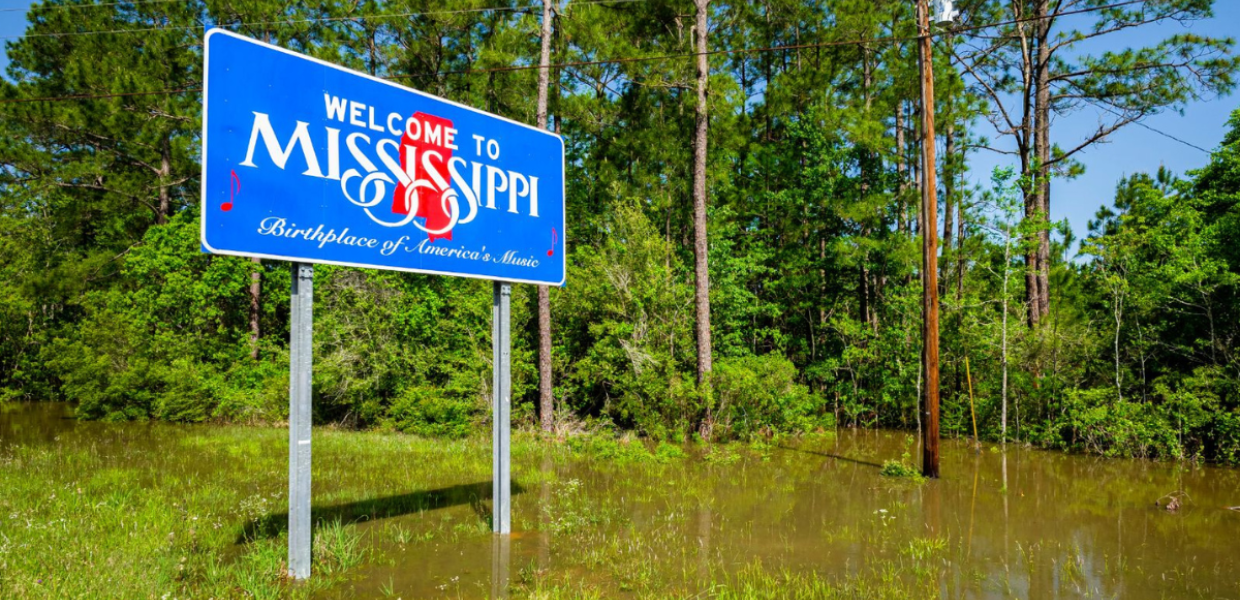As Jackson, Mississippi residents have been denied the basic human right of clean water access, Jackson becomes the latest American community of color to fall victim to environmental and systemic racism.At the writing of this piece, the water from Jackson faucets is ranging from tan to dark brown with low to no water pressure. With temperatures in Jackson hovering in the mid-80s, it’s an especially dangerous time to not have access to safe water to drink or clean with, let alone enough water to flush toilets or fight fires.
Though Jackson’s dire water situation is only recently receiving national attention, the city’s 149,000+ residents are long familiar with contaminated water. In fact, boil water advisories are commonly implemented in the city. It was only after the Pearl River flooded following days of historic rainfall in late August that the city’s already-damaged main treatment plant completely failed. Residents who have access to cars have had to decide if it is worth the price of gas to line up for hours in hopes of getting two cases of bottled water before being sent home with instructions to “shower with their mouths closed.”
Jackson, Mississippi’s population is 82% Black and 24% of its residents are living at the poverty line. As our climate continues to change, the Pearl River is likely to flood repeatedly, causing an outdated and fragile water system to be repeatedly strained unless it is completely replaced. Jackson Mayor Chokwe Antar Lumumba estimates replacing the entire system would cost more than $1 billion. Other potential solutions circulating include such drastic measures as privatizing the water system or abandoning the city altogether.
Access to clean water is still a privilege for many communities of color in this country.
Access to clean water is still a privilege for many communities of color in this country. The obvious comparison is the water crisis in Flint, Mich. Though it is often referenced as a historic example of poor state and local government, to this day the Environmental Protection Agency (EPA) still recommends residents use NSF-certified filters in their home to remove lead. Flint is a town of roughly 100,000 residents, 57% of which are Black, 40% living in poverty. At the height of the crisis, the water system exposed tens of thousands of Flint residents to lead, some at levels 100 times higher than the EPA’s permissible standard.
In 2019, the Natural Resources Defense Council, Environmental Justice Health Alliance for Chemical Policy Reform, and Coming Clean conducted a study titled “Watered Down Justice,” which analyzed EPA data and concluded that unequal access to safe drinking water in the U.S. is primarily based on race. In fact, the study found that there was an increase in EPA drinking water violations if it was (1) a community of color, (2) a low-income community, (3) an area of predominantly non-native English speakers, (4) an area with residents predominantly living in crowded housing conditions, or (5) an area with more people with sparse access to transportation.
Even though the EPA’s Safe Drinking Water Act was created to “guarantee that all Americans have access to clean, drinkable water,” many Black, Indigenous, and Latino communities have been robbed of this guarantee, left to their own devices for decades.
With multiple major waterways, the word “Mississippi” is derived from an Indigenous word that means “big river” or “great waters.” Jackson is Mississippi’s state capital; let its name be a call to action, not an irony.
